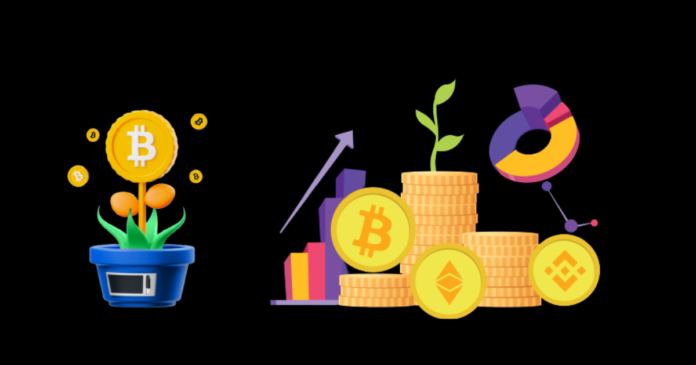Yield farming is not the future of cryptocurrencies why because it’s already here. Liquidity has always been important for exchanges and today’s investors can earn passive interest from their assets while doing literally nothing.
In this article, we will discuss one of Defi’s crucial features yield farming. Forget about proof of work and having to spend thousands of dollars on powering your mining farm. We now have a different type of farm powered exclusively by the crypto assets that you already own. Don’t believe us let’s take a look at how it all works.
How does Yield Farming work?
Yield farming alternatively known as liquidity mining is a way of using crypto to earn more crypto. Investors would usually buy digital assets and leave them for years in their treasure wallet while waiting for the top of the bull run to strike, but that’s no longer the case.
Starting from 2020 members of the Defi community have decided to remove their crypto from cold storage and start passively earning money. Instead of collecting dust crypto assets are now put to work to generate more value. Yield farming is pretty much a weird combination of staking and lending. The rules are a bit different but the main thesis remains the same. You provide money to someone in order to accrue yield and earn.
The number of platforms that provide these services grows by the day. Defi pulse lists maker, compound, curve finance, sushi swap, uni swap, and pancake swap as the most valued projects in this niche. Some of which you have already heard about or used. Don’t believe the hype see the data for yourself in march 2020 defy only hosted 530 million dollars in collateralized assets. Today yield farmers and other participants provide more than 50 billion dollars in liquidity.
So how does yield farming work? Decentralized exchanges can’t work on their own and they rarely provide liquidity from their own pockets. Yield farmers step in and fill the void by providing liquidity to these exchanges and earning rewards in return forming a symbiotic relationship. If we use the most famous dex as an example how yield farming works becomes extremely clear.
AMM
We have a completely decentralized exchange that executes trades not with order books but with an automated market maker. An AMM is basically a smart contract that holds on-chain liquidity reserves and distributes them to token swappers. Per crypto lingo, we call these reserves liquidity pools lps. This entity also sets prices for trading pairs and rewards yield farmers for their contribution.
If a trader swaps tokens on uni-swap he pays a 0.3% fee. The AMM uses reserves from the relevant lp as liquidity for the trade and the fee is awarded to the yield farmer. Since every participant receives something that he needs in an ecosystem like this everyone’s happy. Do note that in the standard AMM model liquidity pools are made for each token pair and all of them have a one-to-one token ratio.
For example, both Ethereum and tether have the same dollar value. This is a basic prerequisite and as a result, all yield farmers must provide both tokens rather than only one otherwise token supplies would be unbalanced and unfit for stable trading. Yield farming does sound simple but there are a few details that you should absolutely know about before starting your journey. As we mentioned all a farmer has to do is deposit crypto assets as a form of liquidity to a decentralized exchange and reap the profits, but the process entails a lot more steps than that.
The first prerequisite is to of course own cryptocurrencies. You can farm practically any asset. Most farmers generally use wrapped bitcoin, Ethereum, tether, USDC, or dai to generate yield but whatever you choose also make sure to own ether. Store your assets in a safe crypto web wallet.
How to become a liquidity provider?
The best solution is to download and install a meta mask wallet as a browser extension. Head over to a decentralized exchange like uni swap and connect your Metamask wallet with the platform. Visit the pool section click add liquidity and select the liquidity pool that you want to farm. Approve your tokens confirm the Metamask transaction and click the supply button to close the deal. Sit back and relax as you watch your apy increase. There is nothing else that needs to be done and as you have seen you’ll spend most of your time confirming and approving transactions, but apart from that, there are no difficult technicalities that you have to learn and overcome. The 40 billion defined markets would be nowhere close to their current size if it were not for yield farming.
Related: What is a Liquidity pool in Crypto & How does it Work?
Decentralized exchanges wouldn’t work flash loans wouldn’t be supplied by any liquidity and governance models wouldn’t even exist. Yield farming took the entire blockchain industry in the right direction by making it even more decentralized. Users autonomously control every part of the trading process working solely with other community members and smart contracts. We now truly have the crypto ecosystem that we have always imagined. Naysayers often claim that over-exaggerated hype will lead Defi to an early grave comparing it to the ICO mania 2017 and its eventual death.
Can we really compare the two? Decentralized finance is alive and well after more than a year and market data shows that the parabolic rise has not slowed down.

